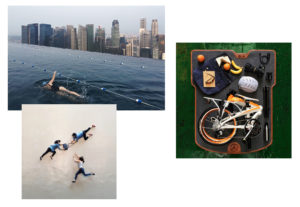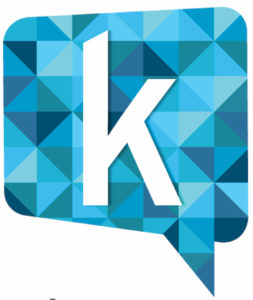In The Know | Photographer and Influencer Pei Ketron
Photographer and influencer Pei Ketron knows a thing or two about visual storytelling. As one of Instagram’s earliest adopters, Pei helped pioneer the meteoric rise of photo-driven social media, amassing an audience of nearly one million followers. Her images have been used by companies like Apple, Google, American Express, and Mercedes, and she’s been named a top Instagram photographer by countless publications. When she’s not busy shooting photography, she’s often speaking about it at premiere events like SXSW, Adobe MAX, and Today at Apple.
Karbo Com joined Pei in San Francisco’s Sunset District to get her advice for brands interested in leveraging the power of photography and digital storytelling.

Let’s hear a little bit about your background
I’ve been a full-time freelancer for seven years and a photographer 18 years. My style and interest is not in those super large scale shoots with the massive crew, huge productions. I like to just show up with my camera, get what the client needs, and call it a day.
In fact, I used to shoot a lot more with my iPhone. For the first six and a half years, my Instagram feed used to be iPhone-only, even though I had been shooting with a DSLR long before joining Instagram.
That’s how I began working with Apple. An inquiry came directly to me from someone at Apple who had been following me for a while. They were looking for photographers who were adept at using iPhones to capture photos for some shoots they were doing. Apple was looking for images to demonstrate the capabilities of their new phone camera.
We did a five day shoot in Tahoe and Yosemite with the Apple crew shooting on an iPhone that hadn’t even been announced yet. It wasn’t a huge production, but it really felt like the shoot was a big deal. There were lots of people around and, of course, the phone was totally on lockdown. They would hand it to me when it was time to photograph and take it back when I was done. It was the first time I captured photos on a device and then just handed over that device at the end of the shoot.
So that’s how I first started with them and now they’ve come to know me as a local photographer they can call on for certain things. And from there it’s evolved to me presenting at the community building creative sessions at Today at Apple.
Tell us more about Apple’s approach to community building. What do you think brands can learn from their approach?
What Apple’s trying to do, especially with the Today at Apple program, is to offer something of value to their community without it feeling like there’s a direct ask on the community to come buy a product. They have started thinking about the fact that retail marketing stores seem like they’re not long for this world given how powerful online commerce has become.
So I think they are trying to anticipate a time when people aren’t really going to want to go in to the stores and buy their products—but they have this whole infrastructure of stores around the world, so how is it that they can use these physical spaces to serve the people in another way? They’re now leveraging these spaces as community building tools. And this creates a way for Apple to encourage people to become advocates for their brand because Apple as a brand is doing these really cool things.
I think it’s a really innovative way of thinking about it. You know, companies do well when they can anticipate the needs that haven’t yet arisen and I think that this is one of those instances. Apple has positioned itself very smartly to anticipate the changes of the market in the future.

Pei has shot commercial photography for Apple, Michael Kors, and Mercedes. Images courtesy of Pei Ketron.
The community events you lead at Apple are photo-centric. Do you think imagery is an especially powerful community building tool for brands?
Absolutely.
I don’t think imagery is a requirement in building community, but it’s certainly a very helpful piece of it. I think it can be a great instigator for people coming together. The age old saying “a picture’s worth a thousand words” really does hold true here. It can take a lot to verbalize an idea and you can convey so much more in an image much more quickly than you can with text. I think that because it’s such a powerful communicator that it’s much more engaging and emotional in a way that words sometimes aren’t. Because images are so emotional, so raw, they can help brands tell their stories really well in a way that gets immediately people engaged. I’ve seen how it can be a really powerful motivator for people.
What advice do you have for brands that are interested in better leveraging the power of photography?
Some brands don’t recognize how powerful good imagery can be for them. Images are often the very first touchpoint people have with your brand and if you don’t have them or have them and they’re low quality then that reflects poorly on your brand. I’m seeing an interesting trend now within companies: I’ve been getting approached by companies—some small companies, and big companies too—who want to hire me to teach iPhone photography classes to their employees so that they can handle photo coverage of all the events they do.
Sometimes this solution works and sometimes it doesn’t.
I do a lot of photo documentary of art exhibits. A few weeks ago, I photographed a new exhibit at Fort Mason. I was talking to the woman running that show and she was telling me how she wished she had someone to help her document not only the finished show, but the setup process too—the building out of the space, people bringing in the art. She was saying, “It really all just falls on me. There’s no budget for it, and I’m the one who needs the images so I’m the one who needs to try to capture it, but at the same time I have so much other work to do.”
And she’s not a photographer so how do you make that work? Companies need to know when to bring in help from professionals like myself or the Karbo Com team. These employees can’t realistically be expected to do everything.

What trends do you see emerging? How are companies being smart about using photography to their advantage?
More and more these days brands are recognizing the real power of actual storytelling. So more than just paying a photographer to do a nice commercial shoot, there’s a tendency now for companies to build and share a more robust story behind their brand. Who are the people behind the company? How did they get where they are?
There’s a leather goods company based out of Nashville called Nisolo and they work with artisans down in South America to make their goods. It’s important for them to tell the story of those artisans; these are the people who create the products. The message it sends is that by buying Nisolo’s goods you’re supporting these people who are now able to afford housing and education. It tugs at the heartstrings a little bit more, so it serves as a really effective marketing tool that in the end drives sales, even though Nisolo is not directly saying, “Hey, buy our stuff.” The end result is that people are more motivated to make a purchase because they’re more invested in the people behind the brand and they know their full stories. That kind of brand storytelling is happening more and more. And strong imagery is essential to sharing those stories effectively.
What is the role of social media in this kind of brand storytelling?
You know, I get hired for massive photo shoots by people who have never met me before and never asked me to prove to them that I can execute on whatever shoot they’re wanting to do. Because these clients have watched my feed over time, sometimes for many, many years, they already know exactly what I can deliver, they know exactly what I’ve done for other clients. It all kind of speaks for itself because I’ve essentially built and maintained that relationship with them for years. And that’s why social media is so powerful these days. It’s so important for brands these days to have that really great social media presence, for them to have really good images.
There’s a lot of aspirational following on social media. Even if these followers aren’t in the market for whatever it is that a brand is selling right now or can’t afford it, people nurture the aspiration that one day they will buy that product—and then they do! I’ve seen it over and over again. I’ve even done it! I’ve followed you for three years and never bought anything, but when I do buy that one thing I know I’m going to buy it from you.
It’s playing the long game, right?
You can find Pei on Instagram here.

Interested in upping your brand’s visual storytelling game? Karbo Com can help. We specialize in creative PR services including:
- Digital brand storytelling
- Social media strategy, content creation and management
- Event coverage and photography
- Strategic community building
Contact courtney [at] karbocom [dot] com to learn more.
Looking for more In The Know? Check out:
In The Know | Ainsley Wagoner, Adobe Senior Experience Designer
In The Know | Sara Bures, Community Engagement Manager at The New York Times